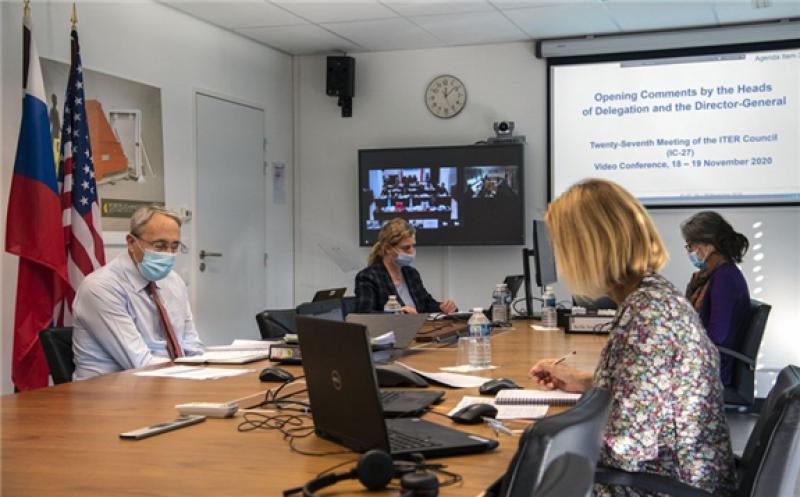The Council of the ITER Organisation said on 19 November that it had reviewed in a videoconference the performance of the ITER Project toward first plasma in view of the COVID-19 restrictions.

Construction of the international experimental tokamak nuclear fusion reactor is under construction at Cadarache in France. Construction is funded mainly by the European Union (45.6%) with the remainder shared equally by China, India, Japan, Korea, Russia and the USA (9.1% each). However, in practice, the members deliver little monetary contribution to the project, instead providing ‘in-kind’ contributions of components, systems or buildings.
The Council said the project had “largely managed to continue its robust performance, both with respect to members’ delivery of first-of-a-kind components and worksite installation and assembly activities”. Some impacts on the schedule towards achieving first plasma in 2025 had been identified, “but still remain to be assessed after consideration of mitigation measures”.
The Council commended the ITER Organisation and Domestic Agencies on their resourcefulness and resolute implementation of the continuity plan under COVID-19 conditions. “Prioritisation of critical activities and launch of the ‘New Normal’ at the ITER Organisation has ensured productivity while rigorously adhering to hygienic measures, thereby largely preserving the integrity of ITER’s closely integrated project schedule while minimising risk and impact to the health and safety of project staff and collaborators.”
The Council noted major project achievements ongoing since its last meeting, including the continued arrival of first-of-a-kind components and the formal start of assembly phase. This included:
Four toroidal field coils have now arrived from Japan and Europe.
Poloidal field coil 6 (PF6), procured by Europe in collaboration with China, is undergoing cold testing at the ITER site. PF5, manufactured onsite, is nearly complete.
The first vacuum vessel sector, fabricated in Korea with port stubs supplied by Russia, arrived at ITER in August, enabling the start of preparation work on the first sector sub-assembly.
The cryostat lower cylinder supplied by India has been installed, and is now being welded to the cryostat base.
The qualification is completed of the upending tools for the assembling of thermal shielding, toroidal field coils and vacuum vessel sectors.
Significant onsite progress has occurred on the installation of the pulsed power electrical network, magnet power conversion system, cryogenics plant, cooling water systems, and cryolines and busbars in the Tokamak Complex.
The Council decided to maintain the Baseline 2016 schedule. The Council will further review the impact of COVID-19 pandemic, and other potential sources of delay, taking into account mitigation measures, at its next meeting in June 2021.